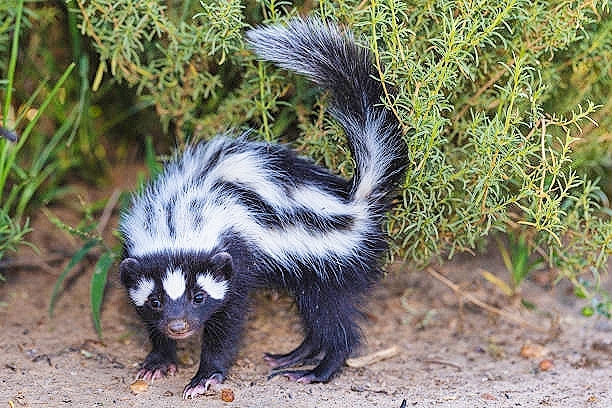Striped polecats closely resemble the North American skunk. These small carnivores have glossy, coarse black fur with distinctive white spots on the face. There is a spot on the forehead and one on each cheek, and the black ears have white tips. Four broad white stripes extend down the body from the top of the head to the tip of the tail.
The body length can vary between 28 and 30 cm, not including the tail, which can add an extra 20 to 30 cm to the total length. Males are usually larger than females, weighing in at about 1.4 kg with females down at about 1.02 kg.
These polecats have long sharp claws on the forepaws, which are mainly adapted for digging, but are also useful when climbing trees. The teeth are shorter than the teeth of weasels (another close relative of the polecat), and the cutting edges of the sheering teeth are less developed. |

